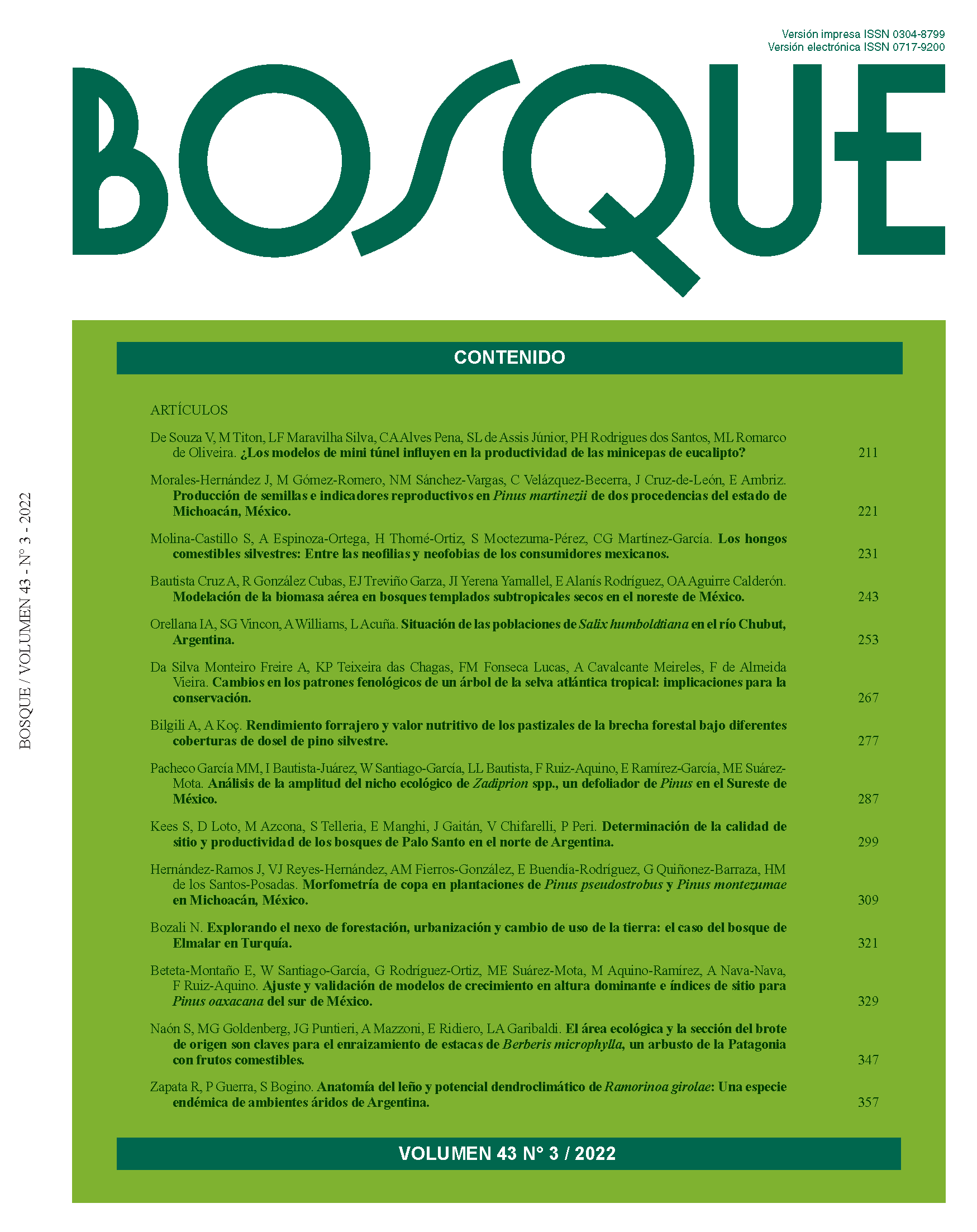Fit and validation of models for growth of dominant height and site indices for Pinus oaxacana in Southern Mexico
Main Article Content
Abstract
Site index models allow for the characterization of forest site productivity and the development of management strategies to achieve objectives of production and conservation of forest resources. The goal of this study was to fit and validate growth models of dominant height and site index for Pinus oaxacana Mirov. The database was derived from 4 inventories in 44 permanent plots and 58 temporary plots, established in even-aged stands located in Ixtlán de Juárez, Oaxaca, Mexico. The data were randomly partitioned into subsets of 50 %, 60 %, 70 %, and 80 % for the model adjustments and the remaining data for each subset were used for cross-validation. The models fitted were Korf, Hossfeld IV and Chapman-Richards, in their expressions ADA (algebraic difference approach) and GADA (generalized algebraic difference approach), using the nested iterative method under the non-linear least squares technique. The models that presented the best statistics for fit and validation were: in ADA, anarmorphic Korf b0 (70 %) and polymorphic Korf b1 (80 %); in GADA, Chapman-Richards (70 %) and Korf (80 %). The Chapman-Richards GADA model presented the most suitable graphical behavior and was selected to classify the forest site productivity. The dominant height and site index model applied to quantify the productive potential of P. oaxacana stands constitutes a valuable tool for the sustainable management of this species in the forests of Oaxaca, Mexico.

